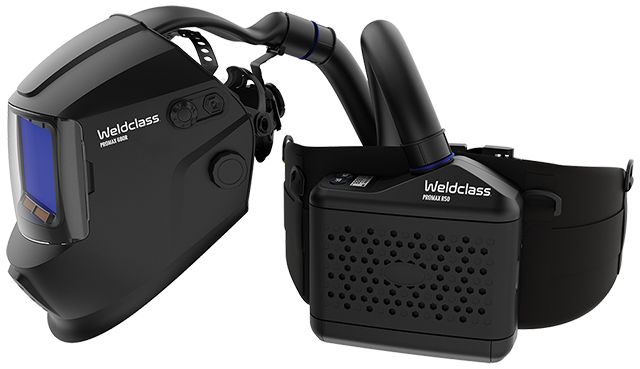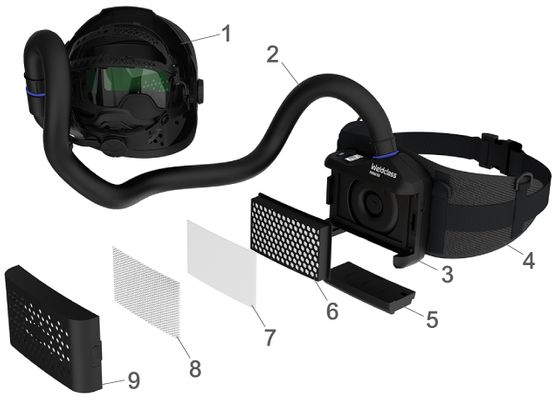Boost Your Welding Safety and Efficiency with Gasless MIG Wire and a Respirator Welding Helmet
الجسم
Welding professionals and DIY enthusiasts are always seeking smarter, safer, and more efficient ways to get their projects done. Two essential tools that can significantly improve your welding experience are Gasless MIG Wire and a Respirator Welding Helmet. These innovations are transforming how welders approach projects, especially in outdoor or poorly ventilated environments. In this article, we’ll explore how these tools can boost productivity, improve weld quality, and, most importantly, enhance safety.
Eliminate the Need for Shielding Gas with Gasless MIG Wire
Traditionally, MIG welding requires a shielding gas to protect the weld pool from contaminants in the air. This setup often involves carrying bulky gas cylinders and dealing with the complexity of regulators and hoses. Gasless MIG Wire, also known as flux-cored wire, eliminates the need for external shielding gas. It contains a flux compound within the wire that produces a shielding gas as it melts, protecting the weld from atmospheric contamination.
Benefits of Using Gasless MIG Wire
Increased Portability: Without the need for external gas cylinders, your setup becomes lighter and more portable. This is especially beneficial for fieldwork and outdoor welding projects.
Superior Performance Outdoors: Wind can easily blow away shielding gas in traditional MIG setups. Gasless MIG Wire, however, is unaffected by wind, making it ideal for outdoor use.
Stronger Penetration: Flux-cored wire often produces deeper penetration, making it perfect for thicker materials and heavy-duty welding tasks.
Cost-Effective: You save money by not having to purchase or refill gas tanks. Additionally, the overall setup and maintenance costs are reduced.
Simplicity for Beginners: Without the complications of gas flow and additional equipment, beginners find it easier to get started with gasless MIG welding.
While gasless MIG wire has some spatter and requires a bit more cleanup than traditional solid wire, its benefits far outweigh the drawbacks for many users.
Protect Your Health with a Respirator Welding Helmet
While welders often focus on protecting their eyes and skin from burns and UV radiation, many overlook the importance of respiratory protection. Fumes and gases generated during welding can be hazardous to your health. That’s where the Respirator Welding Helmet comes in — it combines the eye and face protection of a traditional welding helmet with a built-in respirator system to filter out harmful particulates and fumes.
Why You Need a Respirator Welding Helmet
Improved Air Quality: These helmets come with integrated air-purifying respirators (APR) or powered air-purifying respirators (PAPR) that ensure clean, filtered air reaches your lungs. This is critical when working with coated metals or in enclosed spaces.
Better Comfort During Long Projects: PAPR systems continuously provide fresh air, reducing fatigue and heat build-up inside the helmet. You can work longer with less discomfort.
Seamless Protection: You no longer need to wear a separate mask under your helmet, which can be uncomfortable and affect your welding posture. A respirator welding helmet provides a comprehensive solution in one piece of gear.
Compliance with Safety Standards: Many industrial and construction job sites now require respiratory protection for welders. Using a helmet with a built-in respirator helps you stay compliant with safety regulations.
Reduced Long-Term Health Risks: Exposure to welding fumes can lead to serious conditions such as chronic bronchitis, metal fume fever, or even cancer. Investing in a respirator welding helmet helps reduce these long-term health risks significantly.
Pairing Gasless MIG Wire with a Respirator Welding Helmet
The real advantage comes when you combine Gasless MIG Wire with a Respirator Welding Helmet. Since flux-cored wire produces more fumes than traditional MIG welding, respiratory protection becomes even more essential. The helmet protects your lungs from increased smoke, while the wire allows you to weld efficiently outdoors or in less controlled environments.
This combination is especially useful in construction, shipbuilding, pipeline work, and farm equipment repair—where welders often work in rugged, outdoor environments and don’t have the luxury of controlled ventilation.
Choosing the Right Products
When selecting Gasless MIG Wire, consider the type of metal you're working with, the thickness of the material, and your machine's compatibility. Look for quality wires that produce stable arcs and consistent feed rates.
For Respirator Welding Helmets, check for certifications like NIOSH or ANSI approval. Ensure the helmet fits well, offers good visibility, and includes adjustable airflow controls if you're opting for a PAPR system.
Final Thoughts
If you’re looking to increase your welding efficiency and safety, investing in Gasless MIG Wire and a Respirator Welding Helmet is a smart move. These tools simplify your setup, provide superior protection, and help you deliver professional-quality welds no matter where you’re working. Whether you're a seasoned welder or just starting out, this powerful combination will help you stay safe, productive, and ready to tackle any welding job with confidence.











تعليقات